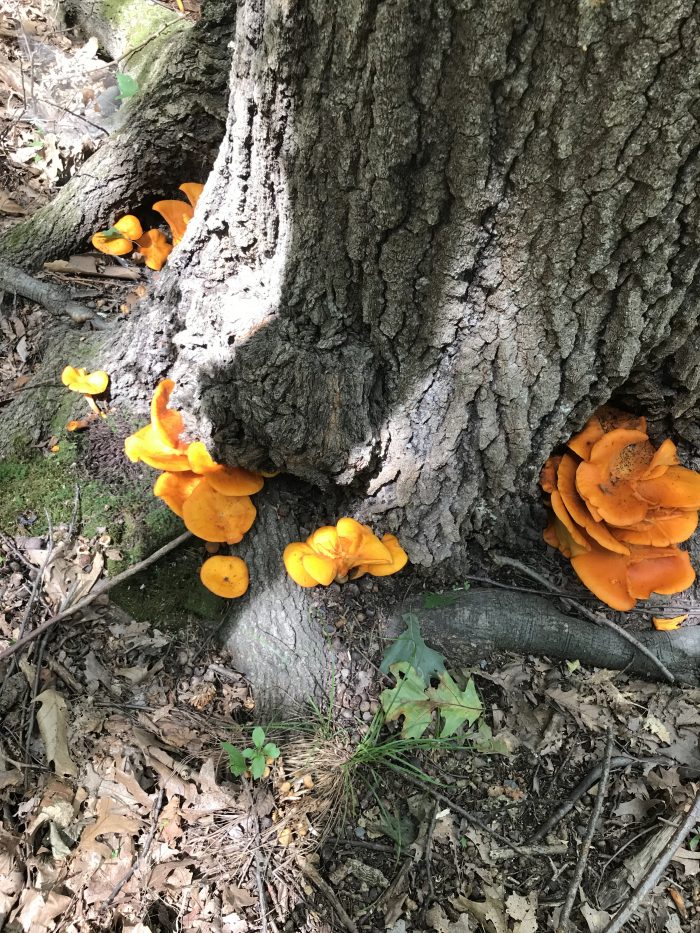For the first time, this September the heat broke and the cool fall breeze swept through the woods. Mushroom foragers like to explore untouched land, so my first choice was this abandoned Boy Scout camp I used to explore as a child.
The first mushroom that caught my eye are called the common hedgehog fungus or scientific name hydnum repandum. These mushrooms looked like small piles of pizza dough scattered on top of the ground. Looking at the underside of the cap it should have spines or teeth and this is what produces the spores.
After harvesting the hedgehogs I spotted a large oak tree and headed off the trail to check around it. I’m trying to look for old oak tree’s because some of the common fall mushrooms grow around this tree in the northeast.
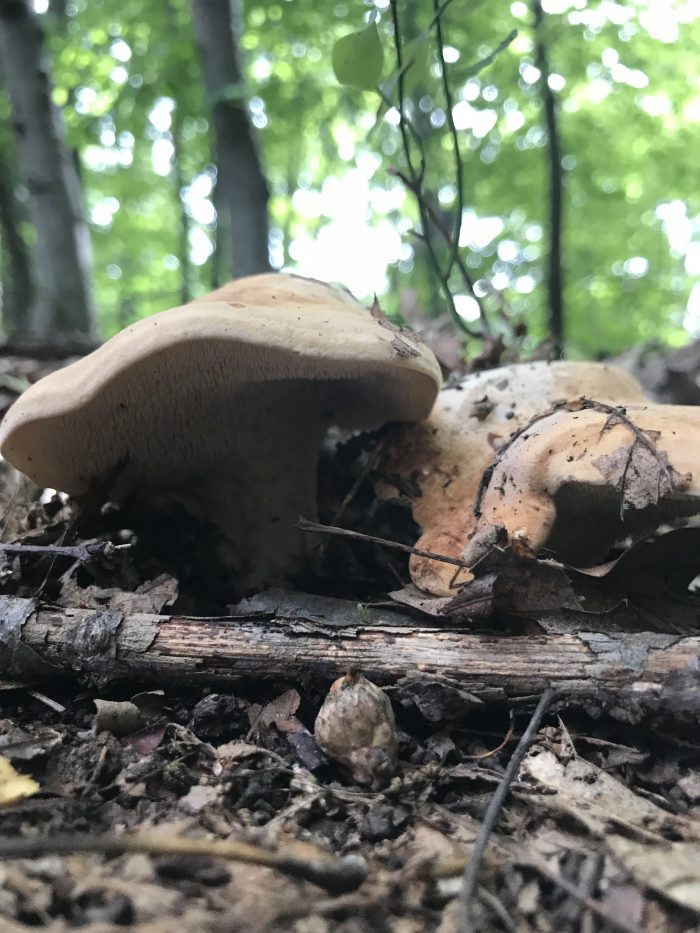
After looking around the tree I was drawn to a vibrant purple mushroom that I found scattered in different fruiting stages. Understanding the different fruiting stages help to positively identify mushrooms. With this mushroom, it was easy enough to figure out with its deep violet color and the brownish weblike vail being, Violet Cort or conrtinarius vuilaceus. With all the guide books saying it is not recommended for consumption, I left them. Hoping to find other choice fall edible mushrooms like hen-of-the-woods, lions mane and oyster mushrooms.
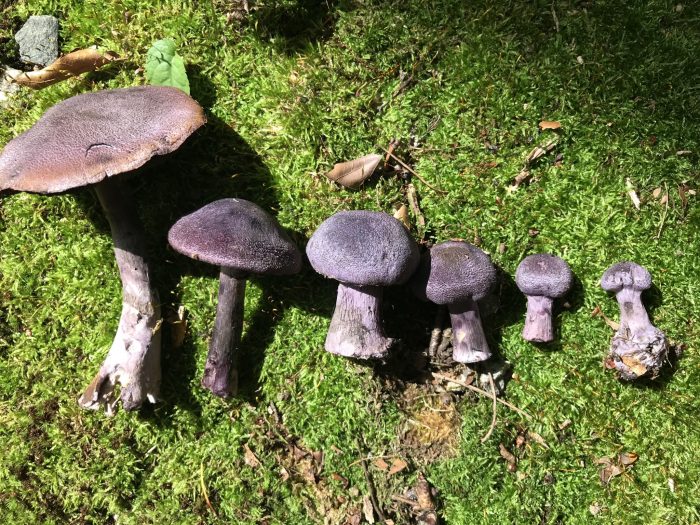
After exploring 100 different oak trees, I found my first hen-of-the-woods, ram’s head, sheep’s head or commonly known in Japan as maitake; “dancing mushroom”. I have bought the maitake mushroom from Wholefood once before and it was tiny compared to this one I found. These mushrooms can get up to 100 pounds.
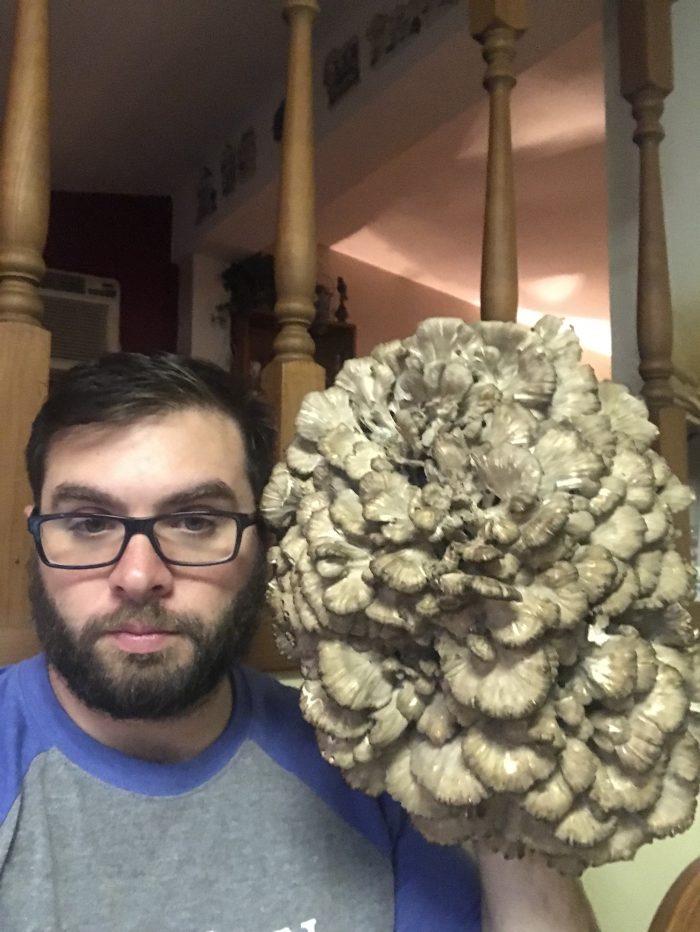
When first hunting hen-of-the-woods, I came across a similar-looking fungus called black-staining-polypore. Both grow at the base of oak trees and have brackets like structures. The hen-of-the-woods has a smaller bracket structure and grayer in color then the black-staining polypore which is golden brown in color and its pore surface stains gray to black.
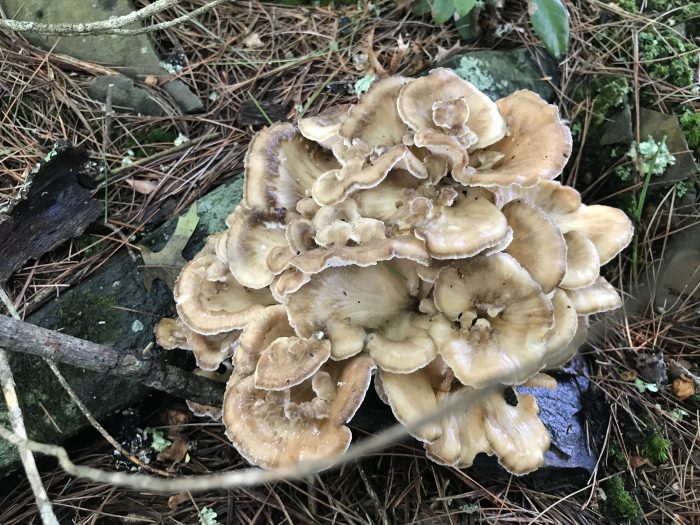
Black Staining Polypore 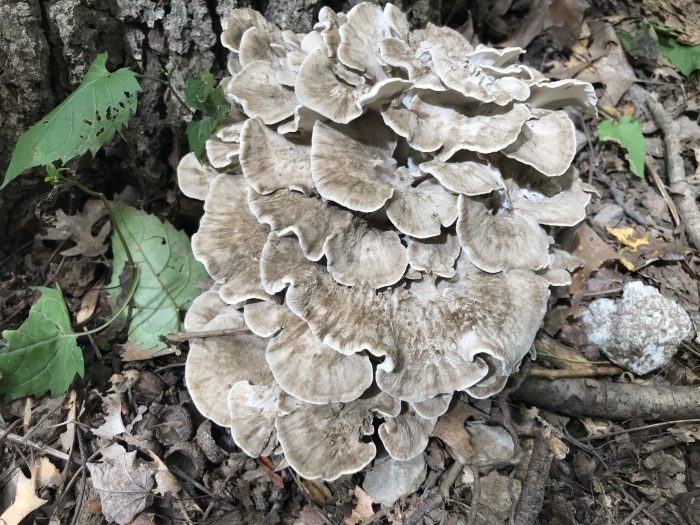
Hen of the woods
Here in New York, I found black-staining-polypore to start fruiting in the mid-summer and hen-of-the-woods in September when the tempature starts to drop down in the 60 to 70 degrees fahrenheit. Both these mushrooms are edible when cooked (Always cook your edible mushrooms.)
Continuing on my hike, I soon spotted from a distance, bright orange mushrooms growing from the base of a tree. I studied these mushrooms so I instantly knew they where the poisonous Jack-O’-Lantern. These mushrooms are bright orange in color with true gills that do not run down the stem. These are very poisonous mushrooms and should not be consumed but they are beautiful to look. Another cool feature of this fungus is that it’s bioluminescent which means it glows in the dark.
